Not just a battlefield: Meet Cooch’s Bridge, the little-raced thoroughbred
By Leoné Cahill-Krout, Cooch’s Bridge historic site supervisor
Most people (in Delaware, at least) who hear “Cooch’s Bridge” probably think of the historic site known as the only Revolutionary land battle in the state’s history. But the name also has another historical connection.
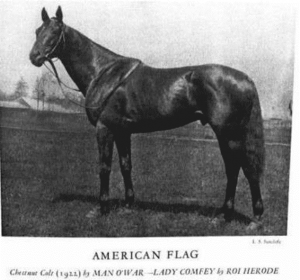
A horse named Cooch’s Bridge was a chestnut colt born into some of the most elite in the horse racing industry. Born in 1939, at the renowned Far Away Farms in Lexington, Kentucky, the horse’s father (known as a “sire”) was American Flag, who enjoyed a successful racing career earning $82,275 before retiring in 1942, during World War II to the U.S. Army Remount Service.
The owner of the farm, Samuel Doyle Riddle, was a horse breeder and best known for his famed racehorse, Man O’ War, grandsire of Cooch’s Bridge’s.
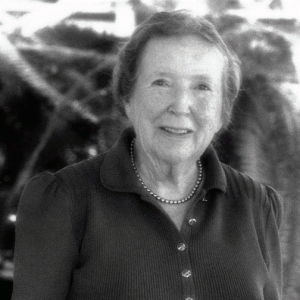
At the age of two and ready to race, Cooch’s Bridge had access to the finest in the horse racing industry. By now, he was living in Delaware at Christiana Stables with his owner, heiress and philanthropist Jane DuPont Lunger, and his new trainer, Jack A. Healey.
Both Jane and Jack were highly regarded for their talent and acumen with thoroughbred horses.
Despite having all the benefits and being surrounded by the best in the industry, sadly Cooch’s Bridge did not earn acclaim with a mediocre record of 44 starts (races), five wins, five places and five shows. His earnings in his brief racing career totaled only $6,000. In fact, one daily racing form described him as “…never a serious contender.”
However, research shows that he was pushed hard. Perhaps too hard. In this Daily Racing Form from June 21, 1941, Cooch’s Bridge was shown to have been pressed to race weekly without time to rest or heal in between.
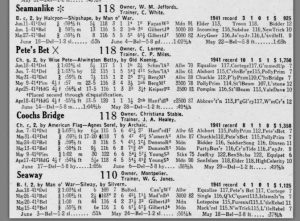
Cooch’s Bridge was not entirely without success in his career, though. On May 24, 1941, at Belmont Park with Chilean jockey Ruperto Donoso, Cooch’s Bridge won the second race of the day, running 5/8 of a mile, for the first win of his career.
Through racing forms, it can also be found Cooch’s Bridge raced at Delaware Park, Pimlico and Havre de Grace, Maryland. He retired back to Christiana Stables. He sired a colt and a filly, but neither did much racing.
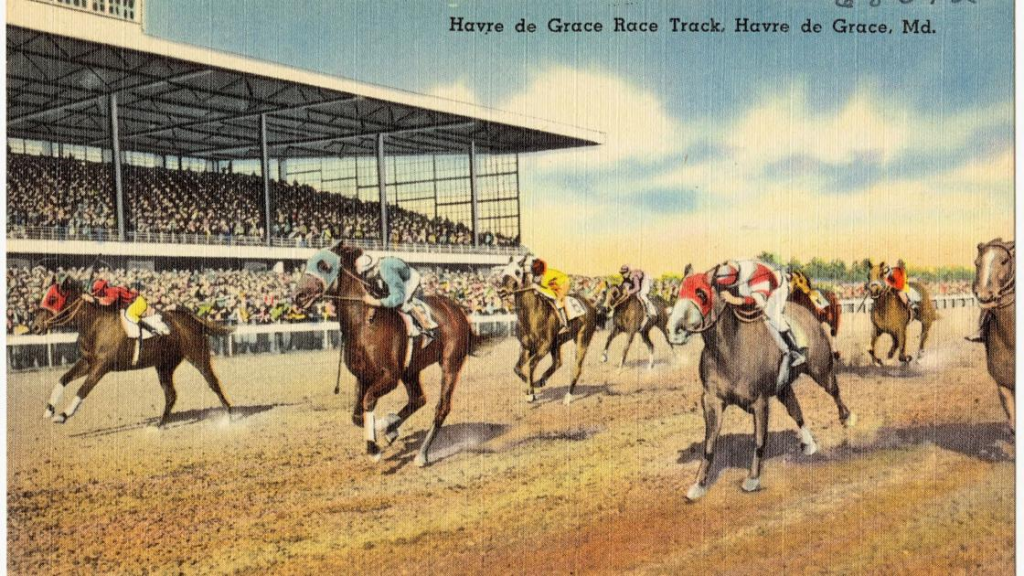
In 1908, New York adopted anti-wagering laws, forcing several tracks to close. Several notorious mobsters looked to other states and by August 24, 1912, the Havre de Grace racetrack, nicknamed “The Graw,” opened to a crowd of nearly 6,000 people.
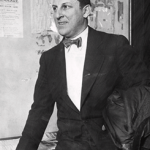
Among them is one of the racetrack’s investors, Arnold Rothstein, also known as “The Brain” and kingpin of the Jewish New York mob, along with other mob bosses such as Meyer Lansky, Lucky Luciano, Al Capone and Dutch Schultz.
Just as Rothstein fixed the 1919 World Series, it is alleged that many of the Havre de Grace races were “fixed.”


